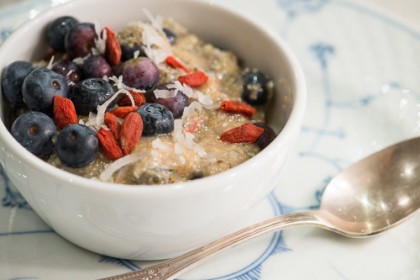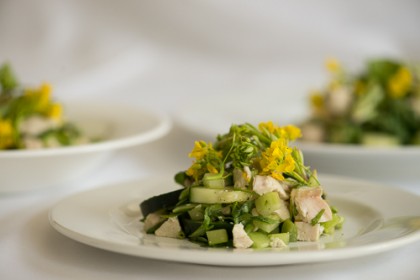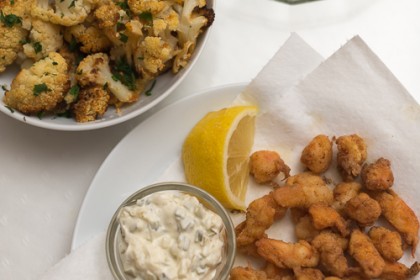A: Many gluten free people use a kitchen which is not completely gluten free. Families have to consider many issues when one person is gluten free to decide whether to make the kitchen
Here are the issues to consider:
• The gluten tolerance of the person who is on the gluten free diet. Let’s face it, in any “mixed kitchen”, no matter what you do, no matter how hard you clean, no matter what precautions you make — accidents are going to happen. So you really need to ask yourself if you have traces of gluten once in a while, are you ok with it.
• The general health of the gf person — have they recovered from all their symptoms. I would make it a massive priority to maintain a gluten free kitchen until the health of the family member is better. Once the person’s health is restored, then the family can consider the other issues.
•The attitude of the person on a gluten free diet. If the gf person is an adult and they don’t mind everyone else eating one thing while they eat something different, it is fine. But if the gf person is a child, then sometimes it is easier if they have the support of the family or a parent who also maintains a gf diet. The gf person will often have to forgo what everyone is eating out of the house, so if they can freely eat food in the house, it makes it easier for them and they feel more normal and included. It also makes family life simpler.
•The ability of all family members to prepare food in a careful way to minimize cross contamination is a major issues to consider when making a decision. Style is a big factor here–if you want to not worry about every crumb it is easier to have a completely gluten free kitchen. But, if you are willing to take precautions and prepare food carefully, it is also possible to do both and keep the gf eater healthy.
Here are some things I do when I am traveling and in a kitchen that is not gluten free food.
• Use dishes and pots and pans that have been run through the dishwasher.
• Try to have two pasta pots–one for wheat pasta and one for gluten free pasta. Or just make sure pot is run through the dish washer after it is used for regular pasta. That way all traces of gluten will hopefully be removed.
• Use a separate toaster or use aluminum foil around toast to minimize cross contamination. Tinsley of Celiebo uses toastabags to minimize cross contamination when she travels. But my gluten free husband is shocked anyone would consider using the same toaster and says: “Using the same toaster??? Why don’t you just sprinkle bread crumbs on your food.” And, it is not just my husband, the nutritionist at the celiac center recommends a separate gluten free toaster. Or you can use a broiler for all toasting if that is not an option.
• Have a separate peanut butter jar, jelly and butter or make sure that you put these on a plate and don’t double dip when you are spreading them on wheat bread.
• Prepare gluten free food first. Prepare gluten containing food second. This way, you are preparing the gluten free food in a clean kitchen and minimizing cross contamination. For instance: prepare and cut the gluten free sandwich first. Then you can prepare the gluten containing sandwich and use the knife to cut the gluten containing bread and you don’t need to use another knife. Or serve the gluten free hamburger first. Then serve the hamburgers with regular buns.
• Have a gluten free area for food preparation. This is what is done in many restaurants with gluten free menus.
Anyone with the genetics for celiac or symptoms of gluten intolerance would benefit from a gluten free diet in the household. Celiac is triggered by the load of gluten, so the less you consume, the less potential you have for developing the disease. But, in general, the widest possible diet is the healthiest for most people who don’t have food sensitivities. So, if you aren’t sensitive to these proteins, it is okay to include them in your diet.
Our family is gluten free because we discovered that everyone is sensitive to these proteins and feels better on a gluten free diet and we all have the genetics for celiac as well as symptoms which respond to a gluten free diet. Also, we are not convinced that it is possible to remain gluten free using a kitchen that has a ton of gluten in it. Plus, it is such an effort to remain gluten free outside the house, that I don’t want to have to worry about it when we are home.
Good luck with your gf, non-gf family kitchen! It is a complicated decision–there are no easy answers.
Related posts:
Beyond “You Are What You Eat”–You Are What You ABSORB!
Solutions for Identifying Gluten Free Food
Celiac Symptoms and Learning Problems




Benbarton1 - Excellent answer to this question! I'm the lone GF person and I'm an adult with three other family members who are huge bread/pasta nuts, so I've had to live with some gluten in the neighborhood. Overall health and vigilance is pretty good though, so I like the idea of limiting and accommodating. As per usual, loving the blog.